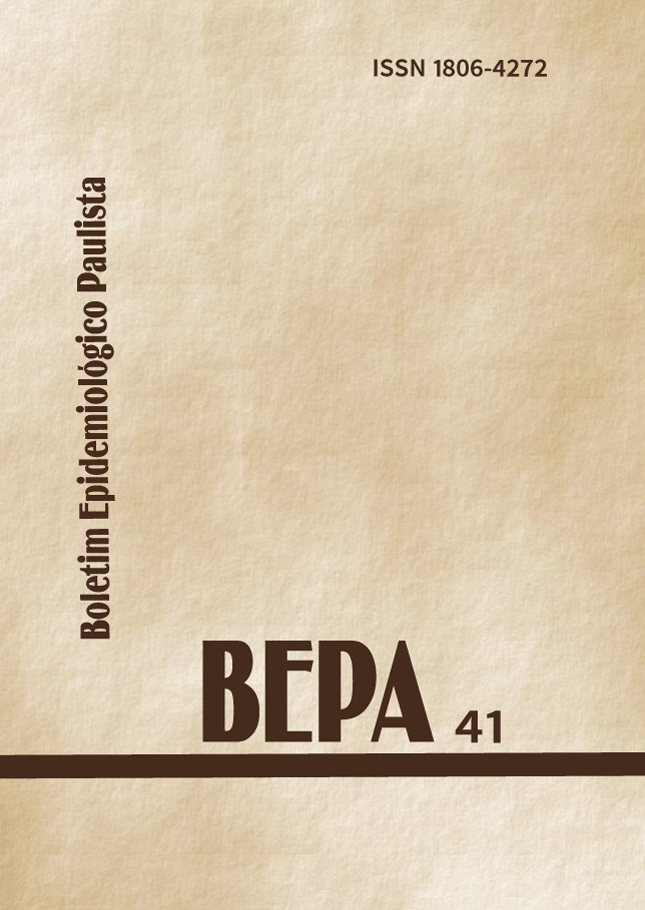Abstract
The three influenza pandemics of the XX Century resulted in important impact in the morbimortalaity sue to
influenza and pneumonia in the world. The pandemic of 1918 caused greater mortality than the First World Was
and other epidemics, with an estimate of 20-40 million deaths in all the world. Pandemics occur when there is a
new viral subtype that is not fully known or is entirely unknown in the human immune system. Currently, there is
the occurrence of human cases of avian influenza (H5N1) with 307 cases and 186 deaths, especially in Asia ,
and epizooties in poultry and wild birds in many countries in the world. Registered human cases derive from
close contact with sick birds, and transmission among humans is nonexistent or quite sporadic. Countries have
developed contingency plans in order to address a new influenza pandemic, which could be caused by the
possibility of genetic recombination of the H5N1 virus, with potential dissemination and major health grievances
in the population.
References
Cheng KF, Leung PV. What happend in China during the 1918 influenza pandemic? International Journal of Infectious Diseases 2007; 371(article in press).
Black M, Armstrong P. An Introduction to avian and pandemic influenza. NSW Public Helath Bull 2006;17(7- 8)99-103.
USA. United States. Department of Health & Human Services, HHS Pandemic Influenza Plan. [on-line]. Disponível em: http://www.hhs.gov/pandemicflu/plan/appendixb.html
WHO. World Health Organization. Influenza Pandemic Plan. The Role of WHO and Guidelines for National and Regional Planning. Geneva, Switzerland. April 1999.[On-line]. Disponível em: http://www.who.int/csr/ disease/avian_influenza/WHO_CDS_EPR_GIP_2006_6.pdf.
Patterson KD, Pyle GF. The Geography and mortality of the 1918 Influenza Pandemic. Bull Hist Med 1991; 65:4-21.
Luk J; Gross P; Thompson WW. Observations on Mortality during the 1918 Influenza Pandemic. Clinical Infectious Diseases 2001, 33:1375-78.
Cunha AM, Magalhães O, Fonseca O. Estudos experimentais sobre a influenza pandêmica. Memórias do Instituto Oswaldo Cruz 1918, tomo X, fascículo I: 101-110.
Taubenberger JK, Morens DM. 1918 Influenza: the mother of all pandemics. Emerging Infectious Diseases 2006; 12:15-22.
Kendal AP, Noble GR, Skehel JJ, Dowdle WR. Antigenic similiraty of influenza (H1N1) viruses from epidemics in 1977-1978 to “Scandinavian” Strains isolated in Epidemics of 1950-1951. Virology 1978; 89: 632-636.
Garcia-Sastre A, Whitley RJ. Lessons Learned from Reconstructing the 1918 Influenza Pandemic. The Journal of Infectious Diseases 2006; 194:S127-32.
Kolata, G. Gripe: a história da pandemia de 1918, 1ª edição. Rio de Janeiro São Paulo; Editora Record, 2002
Ministério da Saúde, Secretaria de Vigilância em Saúde, Influenza, histórico da doença [on line]. Disponível em: http://portal.saude.gov.br/portal/saude/visualizar_texto.cfm?idtxt=21725
Brito NA de. La dansarina: a gripe espanhola e o cotidiano na cidade do Rio de Janeiro. História, Ciência, Saúde. Manguinhos; IV (1):11-30 (mar-jun 1997).
Bertolli Filho C. A gripe espanhola em São Paulo, 1918, 1ª edição. São Paulo; Editora Paz e Terra,
Kawaoka Y, Krauss S, Webster RG. Avian-to-Human Transmission of the PB1 Gene of Influenza A Viruses in the 1957 and 1968 Pandemics. Journal of Virology 1989; p 4604-4608.
Departamento de Imprensa Nacional, Informe sobre a gripe asiática, Rio de Janeiro,1957. in: Museu de Saúde Pública Emílio Ribas
Seção de Propaganda e Educação Sanitária. O que se deve saber sobre a gripe, Estado de São Paulo 1957. In: Museu de Saúde Pública Emílio Ribas
Webster RG, Govorkoka EA. H5N1 Influenza – Continuing Evolution and Spread. N Engl J Méd 2006; 355:2174-77.
WHO. World Health Organization- [Mapa on-line]. Disponível em: http://gamapserver.who.int/mapLibrary/ Files/Maps/Global_SubNat_H5N1inAnimalConfirmed CUMULATIVE_20070524.png [ 2007 25 maio]
WHO. World Health Organization- Cumulative Number of Confirmed Human Cases of Avian Influenza A/ (H5N1). [Tabela on-line]. Disponível em: http://www.who.int/csr/disease/avian_influenza/country/ cases_table_2007_05_24/en/index.html [ 2007 25 maio]
MS. Ministério da Saúde do Brasil, Secretaria de Vigilância em Saúde, Plano Brasileiro de Preparação para uma Pandemia de Influenza, 3ª versão, maio de 2006. [On-line]. Disponívem em: http://portal.saude.gov.br/ portal/arquivos/pdf/p_influenza_consulta_final.pdfn
SES. Secretaria de Estado da Saúde de São Paulo, Coordenadoria de Controle de Doença e Centro de Vigilância Epidemiológica “Prof. Alexandre Vranjac”. Plano Estadual de Preparação para uma Pandemia de Influenza [on-line]. Disponível em: http://cve.saude.sp.gov.br/doc_tec/outros/bepa23_suple4.pdf.
Brasil. Portaria n. 5, de 21 de fevereiro de 2006. Brasília (DF): Diário Oficial da União 2006 fevereiro 22. Seção 1; p.34
WHO. World Health Organization. Case definitions for human infections with influenza A(H5N1) vírus [on line]. Disponível em: http://www.who.int/csr/disease/avian_influenza/guidelines/case_definition2006_08_29/ en/index.html

This work is licensed under a Creative Commons Attribution 4.0 International License.
Copyright (c) 2007 Ana Freitas Ribeiro
